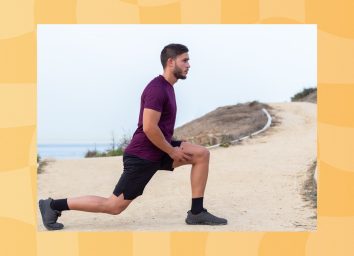Try This Simple Balance Test – Most People Fail It
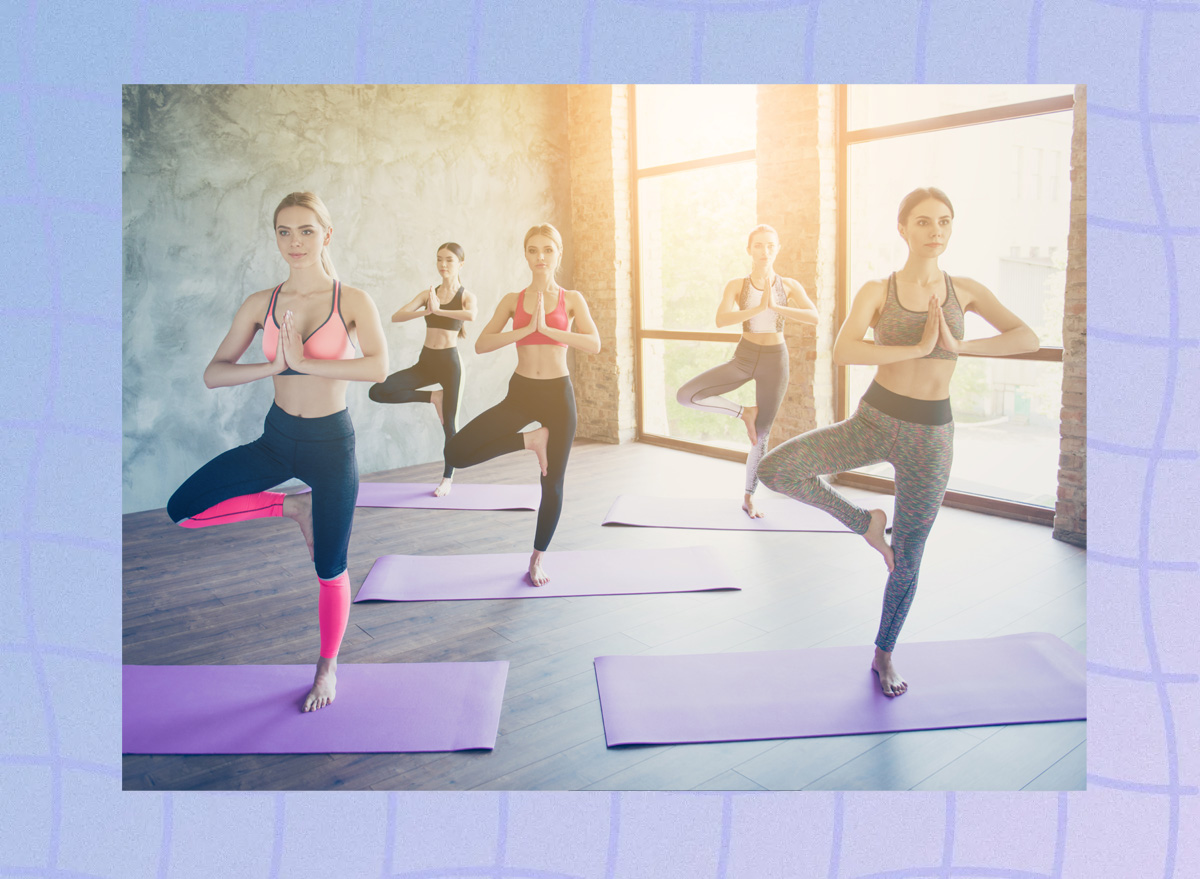
Balance is one of the most overlooked aspects of fitness, yet it plays a crucial role in everyday life. Whether you're walking up stairs, carrying groceries, or simply standing still, your ability to maintain balance determines how efficiently and safely you move. As you age, balance naturally declines, increasing the risk of falls and injuries. But the good news? With the right training, you can improve it.
One quick way to assess your balance is with the Single-Leg Stand Test, a deceptively simple move that challenges your stability. Research has shown that many people, especially those over 40, struggle to pass this test, highlighting weaknesses in core strength, lower body stability, and proprioception (your body's awareness of its position in space). If you find yourself wobbling or unable to hold the position for long, it's a sign that your balance needs work.
The good news is that balance isn't just a natural ability, it's a skill that can be trained. If you struggle with this test, don't worry. Below, we'll walk you through how to perform the test, interpret your results, and improve your balance with simple, effective exercises.
The Balance Test
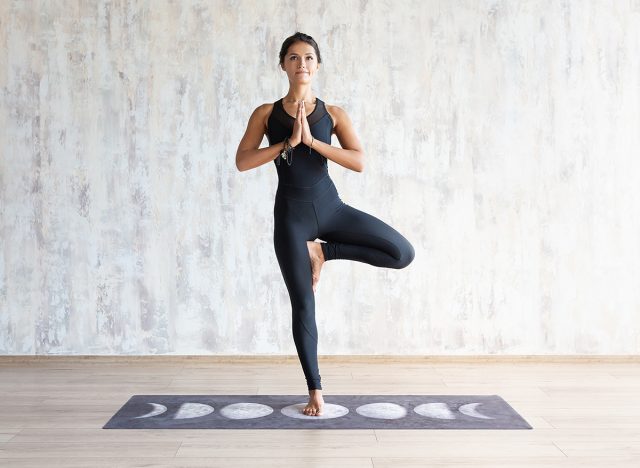
The Single-Leg Stand Test is a simple yet highly effective assessment of your balance, stability, and overall coordination. By requiring you to stand on one foot for a set period, this test challenges the small stabilizing muscles in your legs and core, which play a crucial role in maintaining proper posture and preventing falls.
It provides insight into your neuromuscular control, which tends to decline with age or inactivity, making it a valuable tool for identifying weaknesses before they lead to more serious mobility issues. Whether you're an athlete looking to enhance performance or someone aiming to maintain independence as you age, this quick test offers a clear snapshot of your body's ability to stay steady and controlled in everyday movements.
How to Perform the Test:
- Stand tall with your feet hip width apart and arms relaxed at your sides.
- Lift one foot off the ground and balance on the other leg.
- Hold the position for at least 10 seconds without wobbling or putting your foot down.
- Switch legs and repeat.
How to Score Your Balance:
20+ seconds per leg → Excellent balance
10–20 seconds per leg → Average balance
Less than 10 seconds → Below average balance (needs improvement)
Unable to balance at all → High risk of instability and potential falls
If you struggle to hold the position for at least 10 seconds, your balance may be weaker than it should be. Fortunately, you can train your body to improve stability with targeted exercises.
The Balance-Boosting Routine
To strengthen your balance and coordination, perform the following exercises 3–4 times per week. These movements will help build stability, core strength, and lower body control, reducing your risk of falls and injuries.
Single-Leg Stand (Progression Exercise)
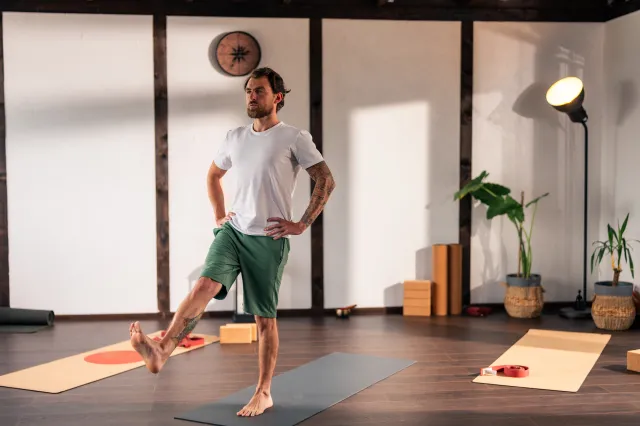
This exercise mimics the balance test but adds variations to challenge your stability further.
How to Perform:
- Stand on one leg with your knee slightly bent and your core engaged.
- Hold the position for 20–30 seconds.
- If this is too easy, close your eyes or move your arms in different directions to increase difficulty.
- Switch legs and repeat.
Perform 3 rounds per leg, gradually increasing hold time.
Heel Toe Walk
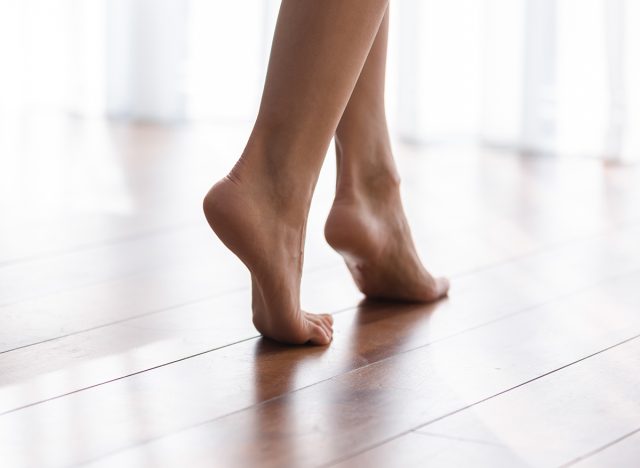
This movement enhances balance by strengthening stabilizer muscles in your feet and legs.
How to Perform:
- Stand tall and place one foot directly in front of the other, heel touching the toes of the opposite foot.
- Walk forward in a straight line, keeping your gaze straight ahead.
- If needed, extend your arms slightly for balance.
Perform 3 sets of 10 steps, focusing on slow, controlled movement.
Step-Ups
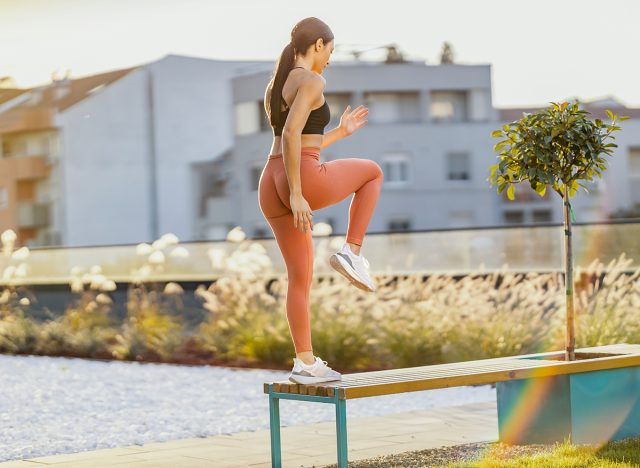
Stepups build strength in the legs and core while improving coordination.
How to Perform:
- Stand in front of a sturdy step or bench.
- Step up with one foot, pressing through your heel to lift yourself up.
- Step back down and switch legs.
Perform 3 sets of 12 reps per leg.
Standing Knee Raises
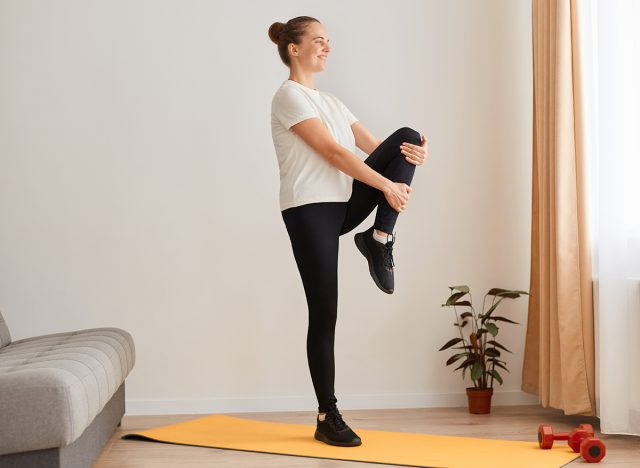
This movement strengthens the hip flexors and core, both essential for balance.
How to Perform:
- Stand tall and lift one knee to hip height.
- Hold for a few seconds, then lower it back down.
- Switch sides and repeat.
Perform 3 sets of 12 reps per leg.
And if you enjoyed this article, don't miss How Long Your Walking Workout Should Be To Shrink Belly Fat.

